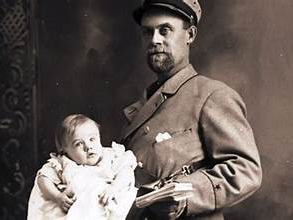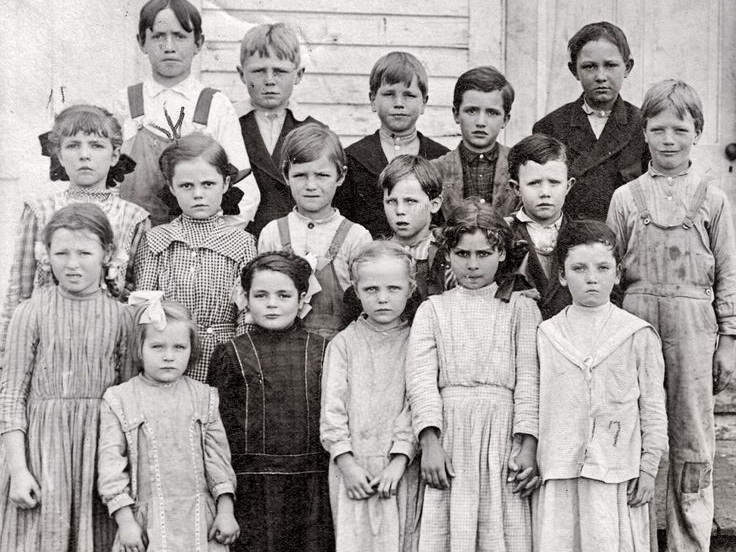People tried mailing children in early 1900s.
people really tried to mail children through the U.S. Postal Service in the early 1900s! 😳📬

“Ready to be shocked? Start scrolling 👇”
Here’s what happened:
1. Background:
- In 1913, the U.S. Post Office started offering a new service called Parcel Post.
- For the first time, people could send packages (not just letters) through the mail.
- The rules about what exactly counted as a “parcel” weren’t super clear yet… so some people got creative.
2. Mailing Children (Seriously!):
- A few families figured out it was cheaper to mail their small children (like a package) than to buy a train ticket to send them somewhere.
- So they attached postage stamps to the kids’ clothes and mailed them — usually to grandparents or relatives a few miles away.
3. How It Worked:
- Kids were usually accompanied by trusted postal workers (they weren’t stuffed in boxes or anything crazy).
- A mail carrier would basically walk the child or carry them on the train to their destination.
- The child would have a tag or stamp on their coat — just like a piece of mail!
4. Famous Cases:
- In 1914, a little girl named May Pierstorff (4 years old) was “mailed” from Grangeville to Lewiston, Idaho.
- She weighed just under the 50-pound limit for parcels, so her parents paid 53 cents in stamps.
- A cousin who worked for the postal service took her safely to her grandmother’s house.
5. The Reaction:
- Word got out and it became a bit of a media sensation — people thought it was funny but also kinda crazy.
- Soon after, the Postmaster General officially banned mailing of humans through Parcel Post.
6. The Rule Today:
- Today, it’s 100% illegal to mail living people (or animals that aren’t specifically allowed, like bees or baby chicks under special conditions).
- But those early attempts are a quirky, true part of U.S. history!
Fun Fact:
Because of stories like this, some people joke that “In America, if it fits, it ships” started way earlier than you’d think! 😄📦
Let’s go even deeper into the story of mailing children in the early 1900s — because it’s even crazier when you hear the details.
The Full Story Behind Mailing Children:

1. Why People Did It:
- Money was tight for a lot of families back then, especially in rural America.
- Trains were the main way to travel long distances, but buying a train ticket could be expensive.
- On the other hand, mailing a “package” (even a human one!) through Parcel Post was much cheaper.
- Plus, people trusted their local mail carriers a lot — they were often neighbors and well-known community members.
2. Early Parcel Post Rules Were Vague:
- When Parcel Post started in 1913, it allowed the mailing of live animals like baby chicks, bees, and small dogs under certain rules.
- Humans weren’t mentioned, because nobody really expected that would be an issue!
- Some clever (and desperate) parents found a loophole: “If I can mail a chicken, why not my 40-pound child?” 🐥👶
3. Famous Cases (More Than One!):
Here are a few examples:
- January 1913:
A baby boy in Batavia, Ohio, was mailed to his grandmother’s house about a mile away.
Cost: 15 cents in postage (plus insurance). - January 1914 (Most Famous Case):
May Pierstorff, age 4, was mailed from Grangeville to Lewiston, Idaho (about 73 miles!).
She weighed 48½ pounds — under the 50-pound limit.
Cost: 53 cents in stamps pinned to her coat.
She traveled in the mail car of a train and was delivered safely by a relative who was a postal worker. - August 1915:
A 3-year-old girl named Maud Smith was mailed 40 miles from her grandparents’ home to her mother’s house in Christiansburg, Virginia.
4. How They Were Transported:
- Kids were never stuffed in sacks or boxed up (thankfully!).
- Postal workers carried them, walked with them, or rode trains with them — treating them like special cargo.
- It was more like babysitting than actual “mail delivery.”
5. Reaction from the Post Office:
- As word spread, newspapers loved covering these stories — it was headline news because it sounded so bizarre.
- The Post Office quickly realized this wasn’t safe or practical.
- By mid-1915, the U.S. Postmaster General issued a final rule: “Children cannot be sent through the mail under any circumstances.”
- After that, only certain animals under strict rules were allowed to travel by mail — never humans again.
6. Legacy Today:
- These stories have inspired children’s books, documentaries, and even museum exhibits about weird early American history.
- It’s often used as a fun example of why clear rules and regulations are necessary when launching new services.
“Enjoyed these facts? We’ve got even more! 👉 Tap here
Summary in 1 Line:
In the early 1900s, some clever American families used a loophole in the postal rules to mail their kids across towns — saving money but sparking one of the weirdest chapters in U.S. history. 📜✉️👶
“Which fact surprised you the most? Share with friends or drop a comment below!”
